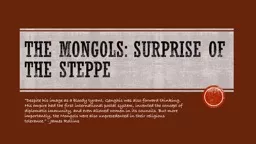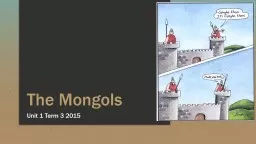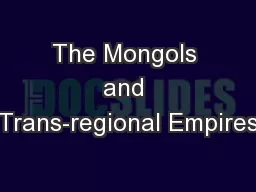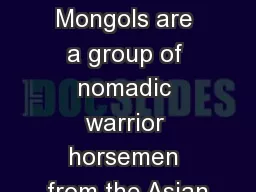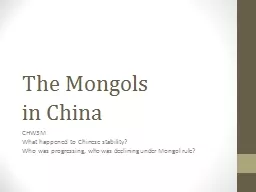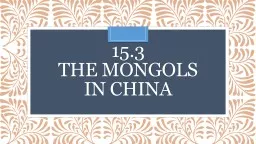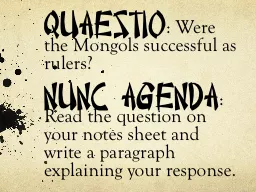PPT-The Mongols: Surprise of the Steppe
Author : trish-goza | Published Date : 2017-06-20
Despite his image as a bloody tyrant Genghis was also forward thinking His empire had the first international postal system invented the concept of diplomatic immunity
Presentation Embed Code
Download Presentation
Download Presentation The PPT/PDF document "The Mongols: Surprise of the Steppe" is the property of its rightful owner. Permission is granted to download and print the materials on this website for personal, non-commercial use only, and to display it on your personal computer provided you do not modify the materials and that you retain all copyright notices contained in the materials. By downloading content from our website, you accept the terms of this agreement.
The Mongols: Surprise of the Steppe: Transcript
Download Rules Of Document
"The Mongols: Surprise of the Steppe"The content belongs to its owner. You may download and print it for personal use, without modification, and keep all copyright notices. By downloading, you agree to these terms.
Related Documents

